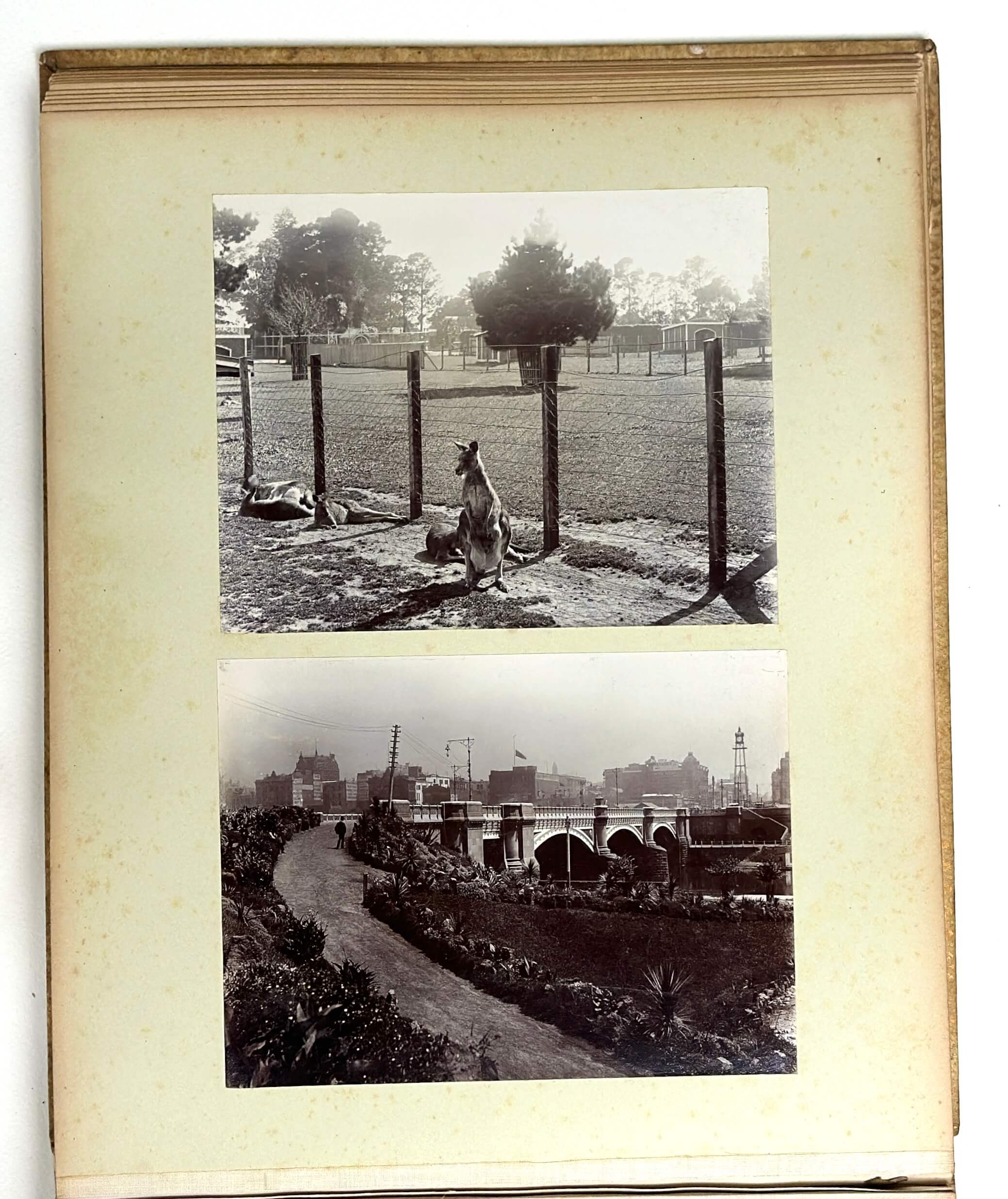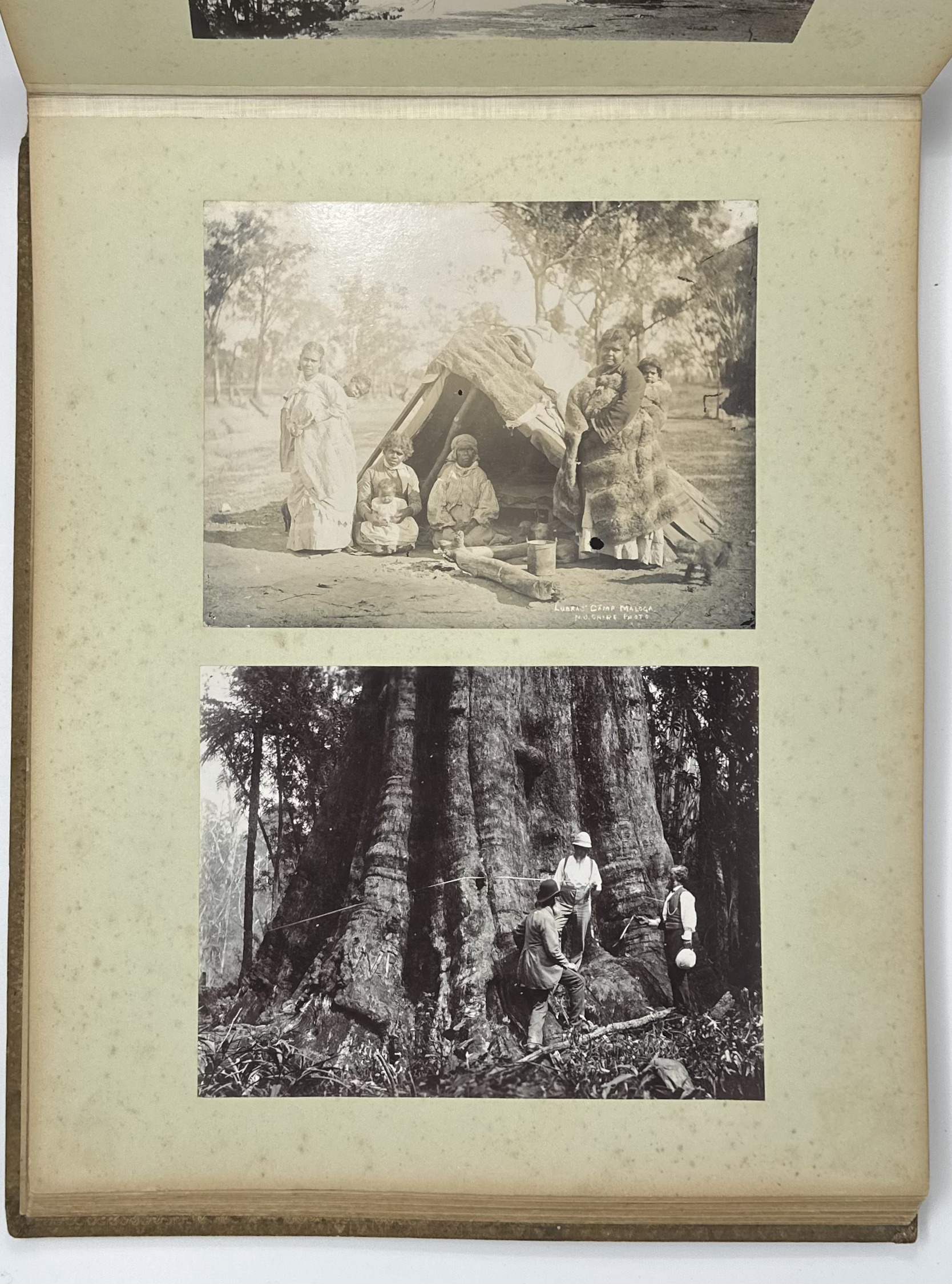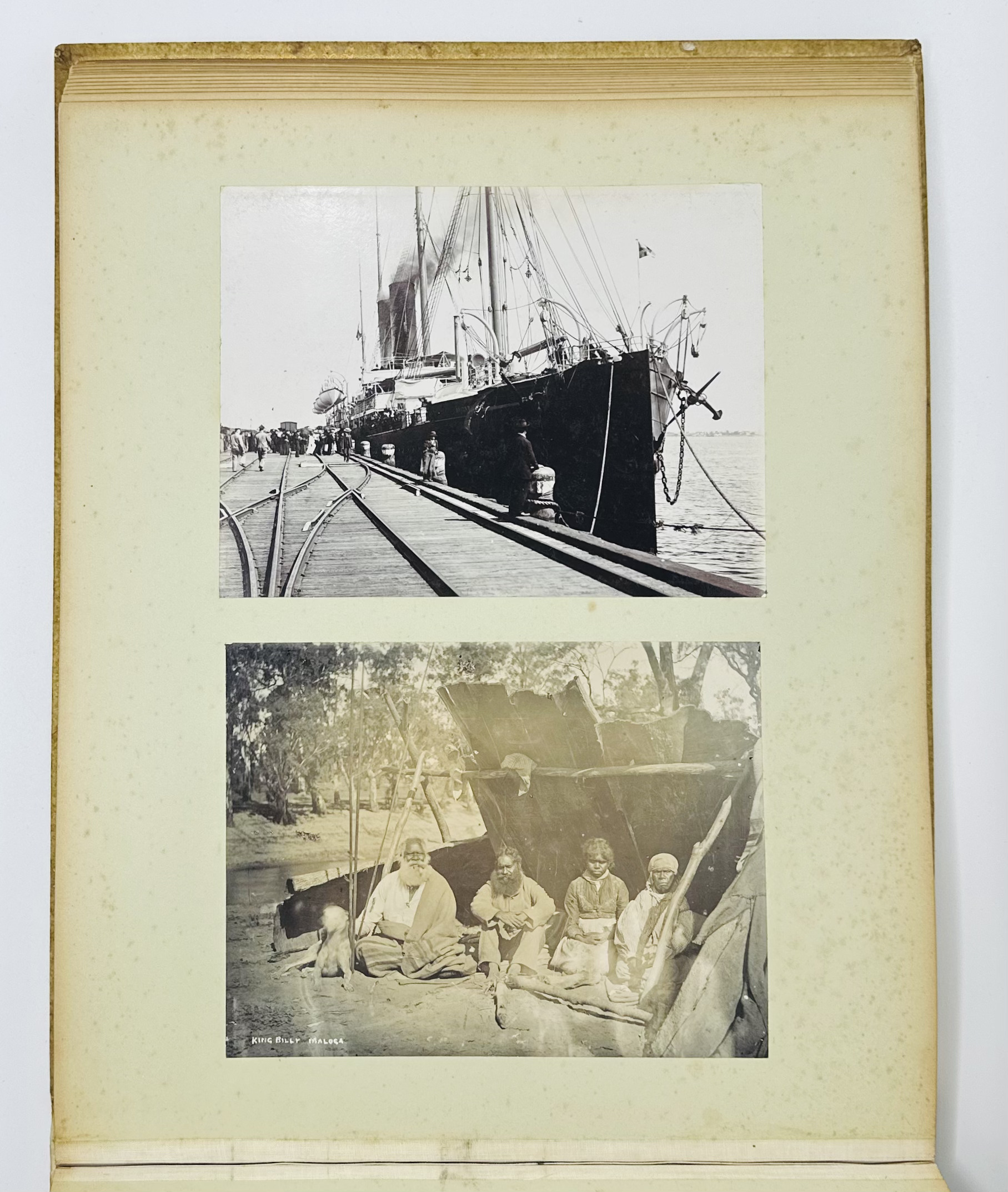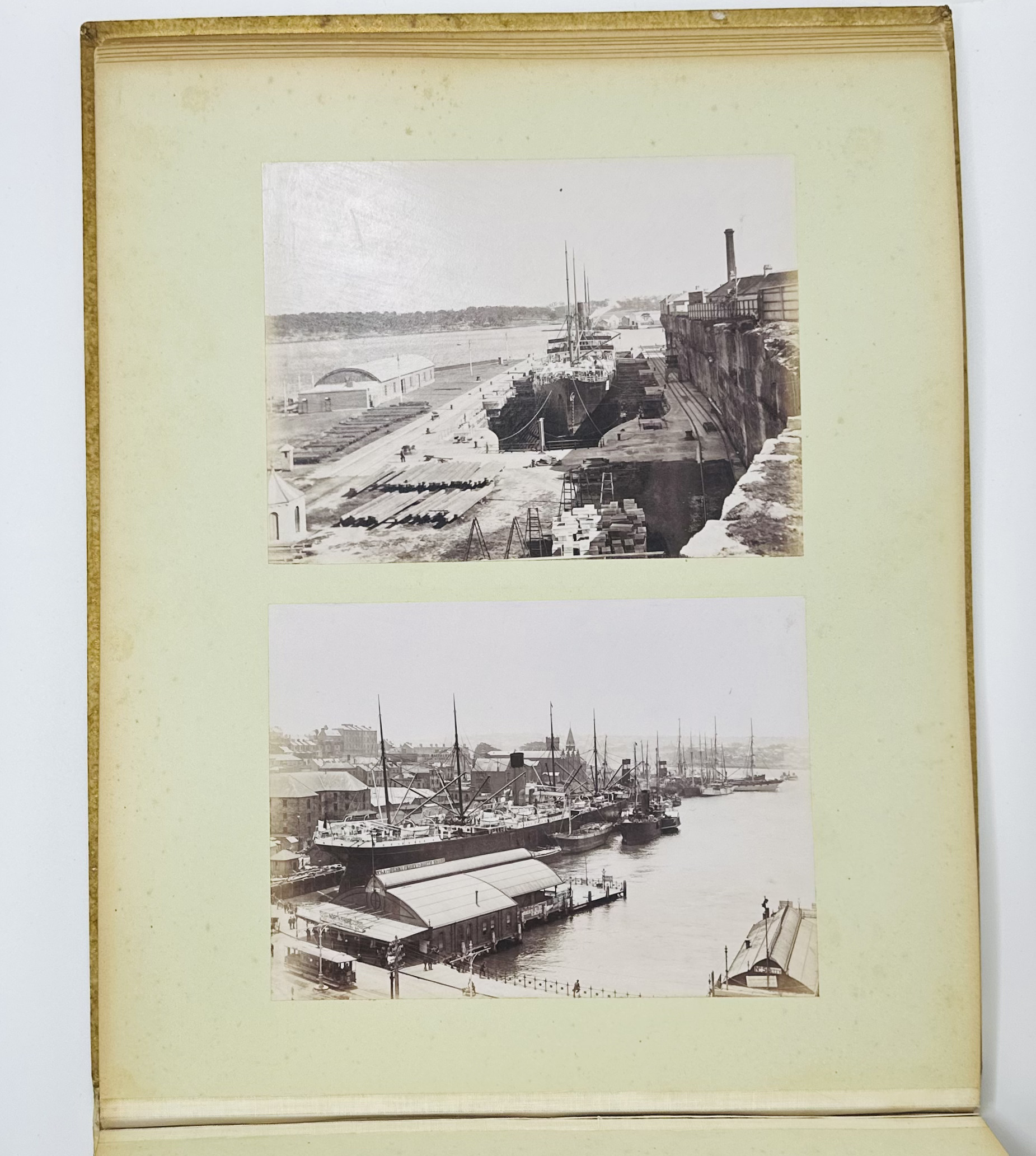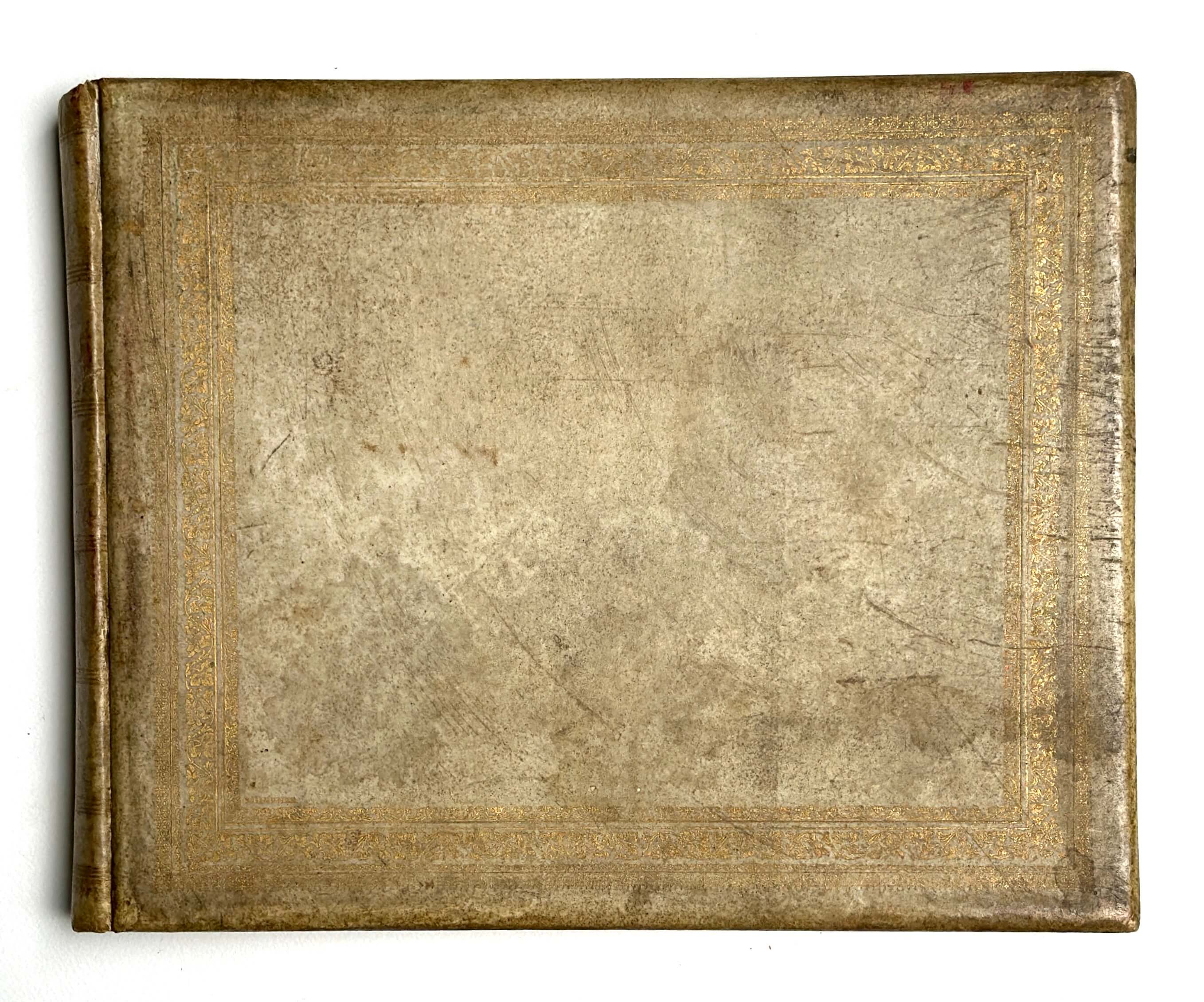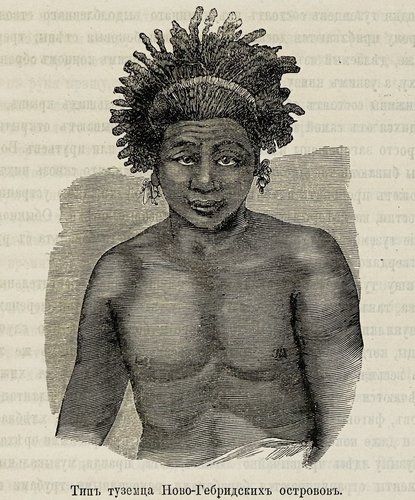
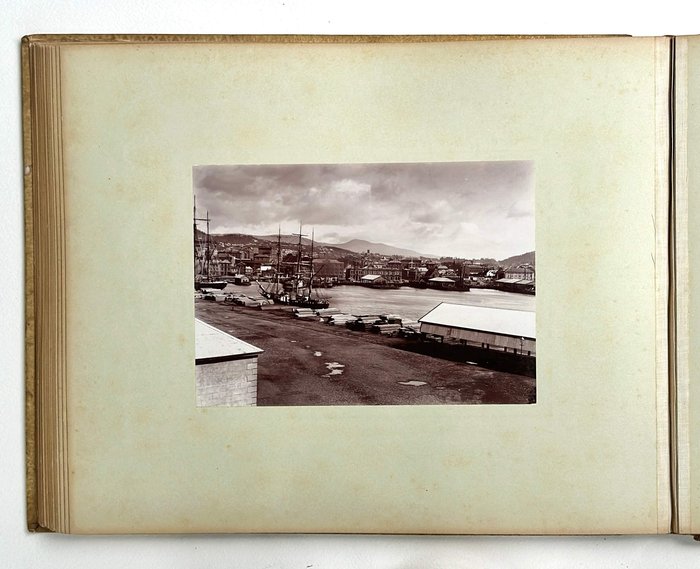





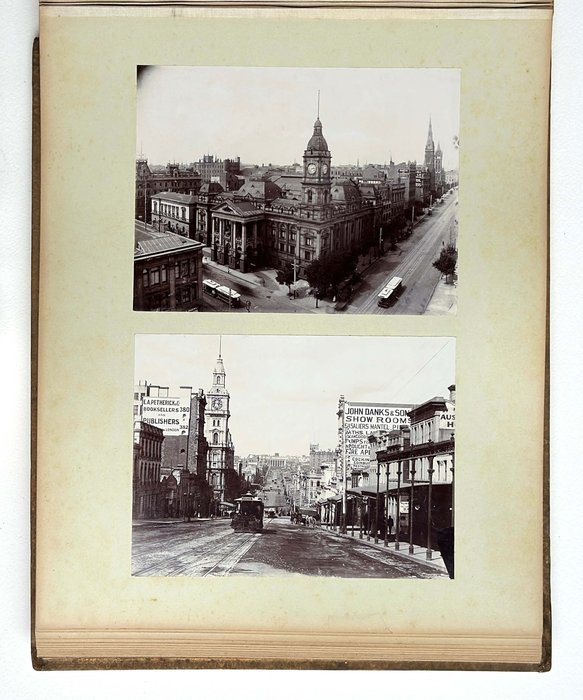


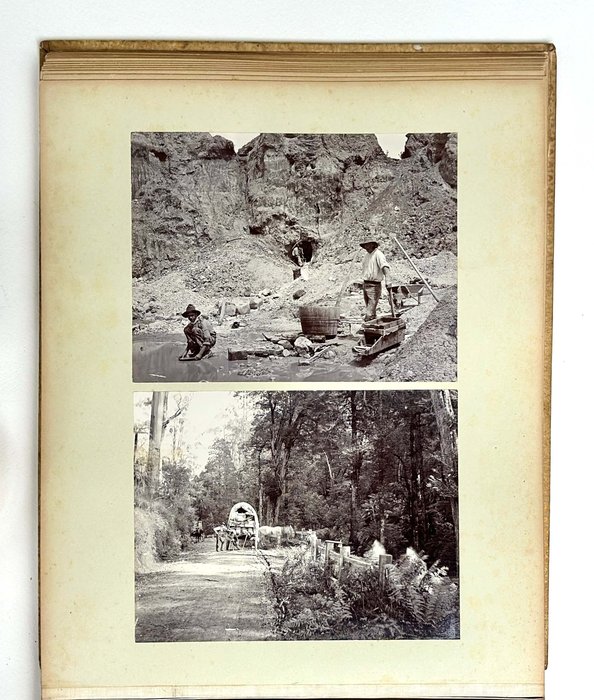




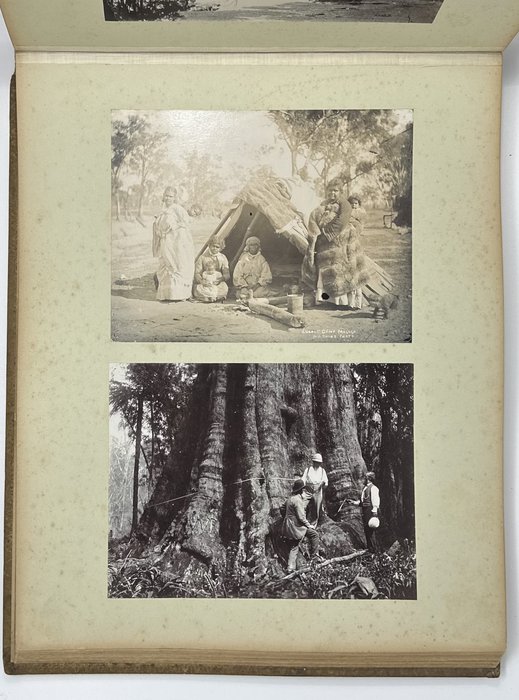

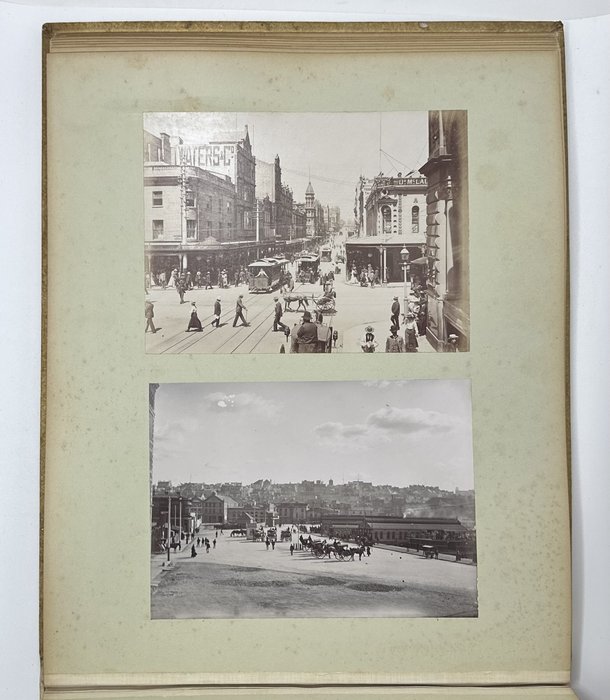





#PC75
Ca. 1880s-1890s
Oblong Folio album (ca. 34x40,5 cm or 13 ¼ x 16 in). 24 card stock leaves. With 77 mounted original gelatin silver and albumen photos, mostly from ca. 18x24 cm (7 x 9 ½ in) to ca. 14,5x19,5 cm (5 ¾ x 7 ¾ in); two smaller photos at the rear are ca. 9,5x15 cm (3 ¾ x 6 in). Over twenty photos are captioned and/or numbered in negative; seven photos with blind stamps “Henry King Photo, Sydney” in the right lower corners; nine photos with period pencil captions in Italian on the mounts. The first leaf with four mounted real photo and printed postcards, each ca. 9x13,5 cm (3 ½ x 5 ¼ in); all with period pencil captions in French on the mounts. Period full vellum album; gilt-tooled ornaments on the front board and the spine; decorative endpapers; all edges gilt. Binding slightly soiled, mild foxing on the mounts, a few photos faded or with mild silvering, but overall a very good album of strong interesting photos.
Attractive extensive collection of large, well-preserved studio photographs of Australia and Tasmania, apparently collected by Italian travellers in the 1890s. The album opens with twelve photos of Perth and Western Australia, attributed to the local studio of spouses Charles G. Greenham (1853-1925) and Laura I. Evans (1865-1943); the captions are: R.M.S. “Omrah” in Freemantle. 14; Freemantle Harbour. 36; [Perth]. High Street. 76; [Perth]. Barrack St. 30; Karridale; St. Geo Terrace. 81; Mundaring Weir. 89; Perth from Terraces National Park. 28; Perth. 10; Falling Karri. Karridale Timber Station; King Karri, 242 feet high, 40 feet girth. G&E.
About a dozen photos of Sydney by Henry King include several views of the city harbour and Circular Quay, St. Andrew’s Anglican Cathedral, General Post Office with the clock tower, King Street, Sydney Spit with the Lyon’s boatshed, &c. A series of views of Melbourne show the city with the Government House, Royal Botanic Gardens, Town Hall, Princes Bridge, Spencer Street, Federal Coffee Palace, Charles George Gordon Memorial, Royal Exhibition Building, General Post Office, Menzies Hotel, &c. There are also views of Adelaide (Rundle Street looking east, King William Street, Adelaide Arcade), Gippsland Lakes, R.M.S. Orizaba, portraits of Aboriginal Australians by Nicholas Caire (“Lubras’ Camp, Maloga,” “King Billy, Maloga,” men spear fishing), gold miners, loggers, horse cart drivers, &c. Over a dozen views of Tasmania show a coastal lighthouse, the town of Strahan (by Albert Sargeant), Hobart (general views, harbour, Government House), Cape Raoul, country roads, “Huts at the Springs,” “Fren Tree Bower,” &c. Two smaller photos at the rear show the wharf at a Pacific island with the advertising of “Burns, Philp & Co. Ltd.” The album also contains four mounted real photo and printed postcards, showing the ocean steamers, which took the travellers on different legs of their journey: from Ceylon to Australia (R.M.S. “Oceania”), from Melbourne to Tasmania (T.S.S. “Loongana”), from Sydney to Hong Kong and thence to New York and Liverpool.
Overall an important, content-rich album of early, well-preserved photographs of Australia and Tasmania, by local studios.
“Greenham and Evans was a commercial photographic company. It had studios in the following locations: Sylvester Street, Coolgardie 1895; Barrack Street, Perth 1895-96; 175 Barrack Street, Perth 1897; 151 Barrack Street, Perth 1898-1900 (Davies and Stanbury 1985, p.171). The company was eventually owned by Denis Brown Dease who arrived in Perth from Melbourne in 1893 (Cato 1955, p.179)”. (University of Cambridge).
“Henry King was born at Swanage in Dorset, England, and brought to Australia as a baby. Very little is known of his early years, apart from what can be gleaned from registers and directories: he served an apprenticeship under photographer J Hubert Newman, married Elizabeth Laing in 1879 and then entered into a partnership with William Slade. In 1880 Slade and King established a photographic studio at 316 George Street, Sydney, which Slade later continued as sole proprietor. King, while making his living through portraiture, eventually became known for landscapes, his images of the ‘vanishing race’ of Aborigines and the documentary photography which he undertook for institutions such as the AGNSW, the Australian Museum and the General Post Office (G.P.O.). By 1901 King was regarded by the ‘Australasian Photo-“ as ‘one of the oldest and one of the most successful photographers in New South Wales … a household word’.” (Art Gallery of New South Wales).
“Nicholas John Caire was born in Guernsey on February 28th 1837. His family, who were of Scottish descent, emigrated to Adelaide circa 1858. Caire pursued his interest as a photographer while working as a hairdresser (Turner 1996, p.392). He studied photography under Townsend Duryea and became a travelling photographer. Caire made a photographic tour of Gippsland in 1865 (Cato 1955, p.76-79). In 1865-68 he had a studio at 97 Hindley Street, Adelaide. In 1870 he married Louisa Master and moved his business to Scandinavian Crescent, Talbot, Victoria (Pike 1969, p.328; Davies and Stanbury 1985, p.140). From 1872-75 he was based at View Place, Sandhurst (now Bendigo), Victoria. In 1876 Caire purchased the Melbourne studio of Thomas F. Chuck. In 1880 he was active at 11 Royal Arcade, Bourke Street, Melbourne (Davies and Stanbury 1985, p.140). In the same year he was one of three official photographers to the Melbourne International Exhibition and he was later made photographer by special appointment to the government of Victoria (Turner 1996, p. 393). In 1885 Caire moved to 2 Darling Street, South Yarra. He occupied various studios in South Yarra until circa 1900 (Davies and Stanbury 1985, p.140). In 1888 he made a photographic expedition to Mt. Buffalo, organized by the Alpine Society (Turner 1996, p.392).” (University of Cambridge).











